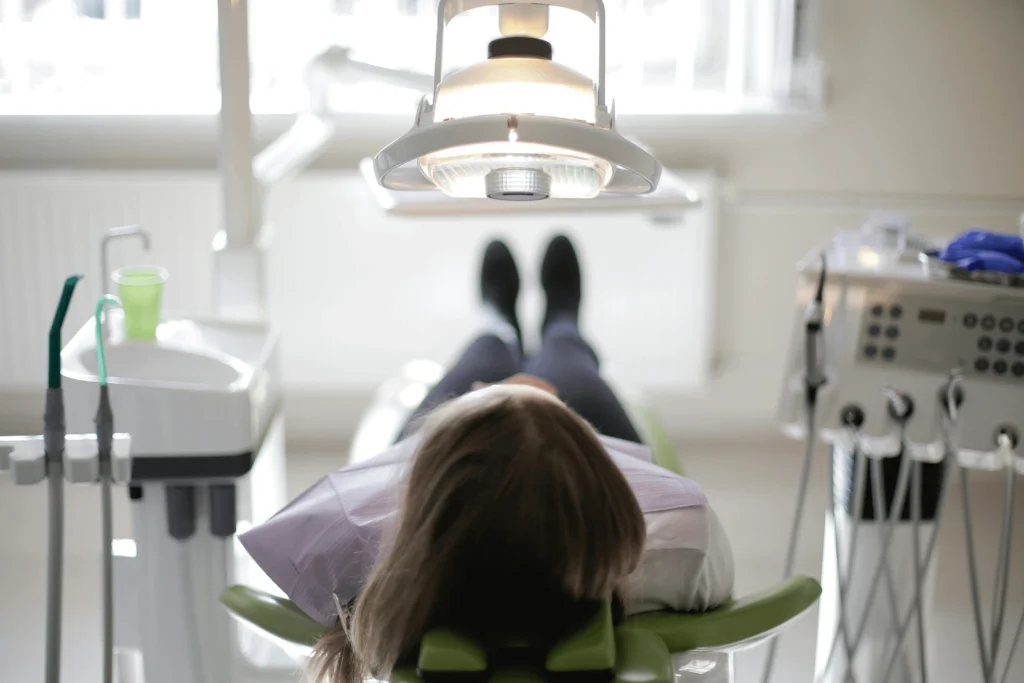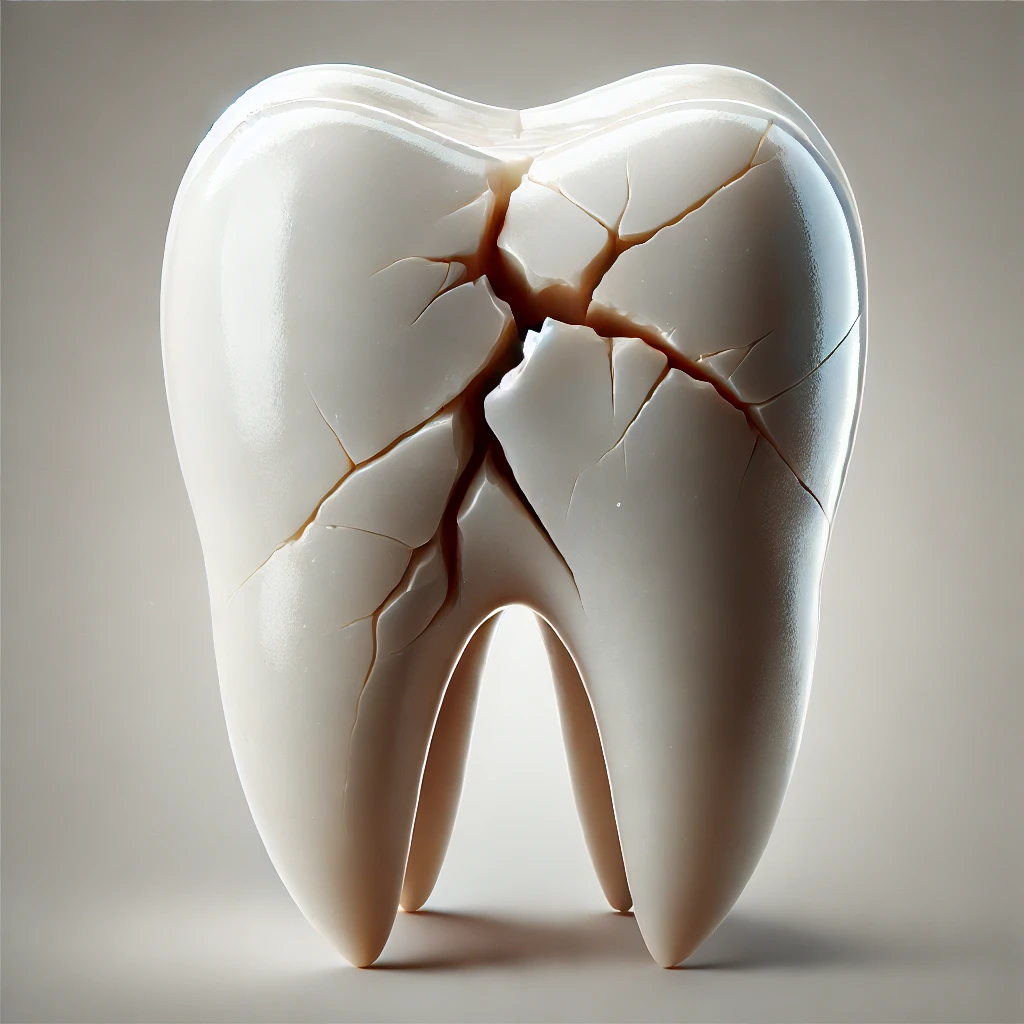Experiencing a broken tooth can be both painful and stressful, but knowing how to fix a broken tooth at home temporarily can provide much-needed relief until you see a dentist. Whether it’s from biting into something hard, an accident, or advanced tooth decay, addressing the issue promptly is crucial. In this guide, we’ll walk you through fast and easy solutions for managing pain, protecting your tooth, and preventing further damage—all from the comfort of your home.
If you’re asking yourself, “Can I fix my broken tooth at home?” —the answer is yes, but only temporarily. Let’s dive in!
Understanding Your Broken Tooth and How to Fix It at Home
Before jumping into fixes, it’s important to understand what kind of damage has occurred and why acting quickly matters.
Types of Broken Teeth and Their Impact on Fixing a Tooth at Home
Not all broken teeth are created equal. Here’s a quick breakdown of common types:
- Cracked Tooth : A vertical crack that may not extend fully into the root.
- Chipped Tooth : A small piece of enamel breaks off, often cosmetic but sometimes sensitive.
- Fractured Tooth : A deeper break exposing the inner layers of the tooth, which can lead to severe pain and infection.
Each type requires different levels of urgency and treatment.
Common Causes Leading to the Need for Fixing a Broken Tooth at Home
Understanding the cause can help prevent future incidents. Some typical culprits include:
- Biting down on hard objects like ice, popcorn kernels, or candy.
- Trauma during sports or accidents.
- Tooth decay weakening the structure over time.
- Bruxism (teeth grinding) causing gradual wear and tear.
Signs and Symptoms of a Broken Tooth
How do you know if your tooth is truly broken? Look out for these signs:
- Sharp pain when biting down.
- Sensitivity to hot, cold, or sweet foods.
- Visible chips or cracks in the tooth.
Why Immediate Action Is Important
Ignoring a broken tooth can lead to complications such as:
- Increased risk of infection.
- Further damage to surrounding teeth or gums.
- Exposed nerves leading to heightened sensitivity and pain.
Taking prompt action helps mitigate these risks while providing temporary relief.
Step-by-Step Guide on How to Fix a Broken Tooth at Home Temporarily
While no home remedy can replace professional dental care, these methods will tide you over until you can visit a dentist.
Using Dental Cement as a Temporary Solution for Fixing a Broken Tooth
Dental cement is one of the most reliable tools for covering sharp edges and protecting the exposed area of a broken tooth. It’s widely available at drugstores or online and easy to apply.
Steps to Use Dental Cement:
- Clean the affected area gently with water.
- Follow the instructions on the package to prepare the cement.
- Apply a small amount directly onto the broken tooth.
- Allow it to set according to the manufacturer’s guidelines.
Tip : For added security, avoid eating on the repaired side until you consult a dentist.
Alternative Methods for Fixing a Broken Tooth at Home (Gum, Wax, Clove Oil)
For minor chips or sharp edges, sugar-free gum or dental wax can provide quick relief. These materials act as a buffer, smoothing rough surfaces and reducing irritation.
How to Use Sugar-Free Gum or Wax:
- Roll a small ball of sugar-free gum or dental wax between your fingers.
- Press it firmly onto the broken tooth or edge.
- Ensure it covers the entire damaged area for comfort.
This method is ideal for short-term use and doesn’t require special tools.
Clove Oil for Pain Relief
Clove oil is renowned for its natural analgesic properties, making it perfect for numbing tooth pain caused by fractures or chips.
Using Clove Oil Safely:
- Dilute clove oil with a carrier oil (like olive oil) to reduce potency.
- Soak a cotton swab in the diluted solution.
- Gently dab the mixture onto the affected tooth and surrounding gum tissue.
Be cautious not to ingest too much clove oil, as it can irritate the stomach.
Avoiding Further Damage
To protect your broken tooth until you see a dentist, follow these tips:
- Stick to soft foods and chew on the opposite side of your mouth.
- Avoid sticky or crunchy snacks that could dislodge temporary repairs.
- Practice good oral hygiene by brushing gently around the affected area.

When and Why You Should Stop Fixing a Broken Tooth at Home and See a Dentist
Temporary fixes are just that—temporary. Seeking professional dental care is crucial for long-term health and function.
Signs That Indicate Professional Help Is Needed After Fixing a Broken Tooth at Home
Don’t delay seeing a dentist if you experience any of the following:
- Severe pain or swelling.
- A loose tooth or significant portion missing.
- Difficulty breathing or swallowing due to swelling.
These symptoms indicate potential complications requiring urgent attention.
Long-Term Solutions from Dentists After Initial Fixes for a Broken Tooth
Depending on the severity of the damage, your dentist might recommend:
- Tooth Bonding : Ideal for minor chips, where composite resin is applied and shaped to restore appearance.
- Crowns or Veneers : Used for more extensive damage, offering durable coverage and aesthetic improvement.
- Root Canal Therapy : Necessary if the pulp is exposed or infected.
Each option ensures lasting results and optimal oral health.
How to Find an Emergency Dentist Near You
In case of an emergency, locate a nearby dentist using:
- Online directories like Yelp .
- Calling local clinics directly for availability.
- Checking reviews to ensure quality service.
Remember, time is of the essence when dealing with dental emergencies.
Preventing Future Tooth Breakage
Take proactive steps to safeguard your smile:
- Wear a mouthguard during sports or activities involving physical contact.
- Maintain regular dental checkups to catch issues early.
- Address bruxism with custom night guards prescribed by your dentist.
Prevention is key to avoiding costly repairs and maintaining a healthy smile.
FAQs Section (People Also Ask) :
Q1: Can I fix a broken tooth myself permanently?
No, permanent repairs require professional intervention. Home remedies offer temporary relief but cannot replace procedures like bonding, crowns, or root canals.
Q2: What happens if I don’t fix a broken tooth?
Neglecting a broken tooth increases the risk of infection, decay, and further damage. Prompt treatment preserves your oral health and prevents costly complications.
Q3: Is it safe to use household items to fix a broken tooth?
Using approved products like dental cement or sugar-free gum is generally safe for short periods. However, avoid experimenting with untested substances that could harm your teeth.
Q4: How long does a temporary fix last?
Temporary solutions typically last a few days to a week, depending on the material used. Always prioritize scheduling an appointment with your dentist promptly.

